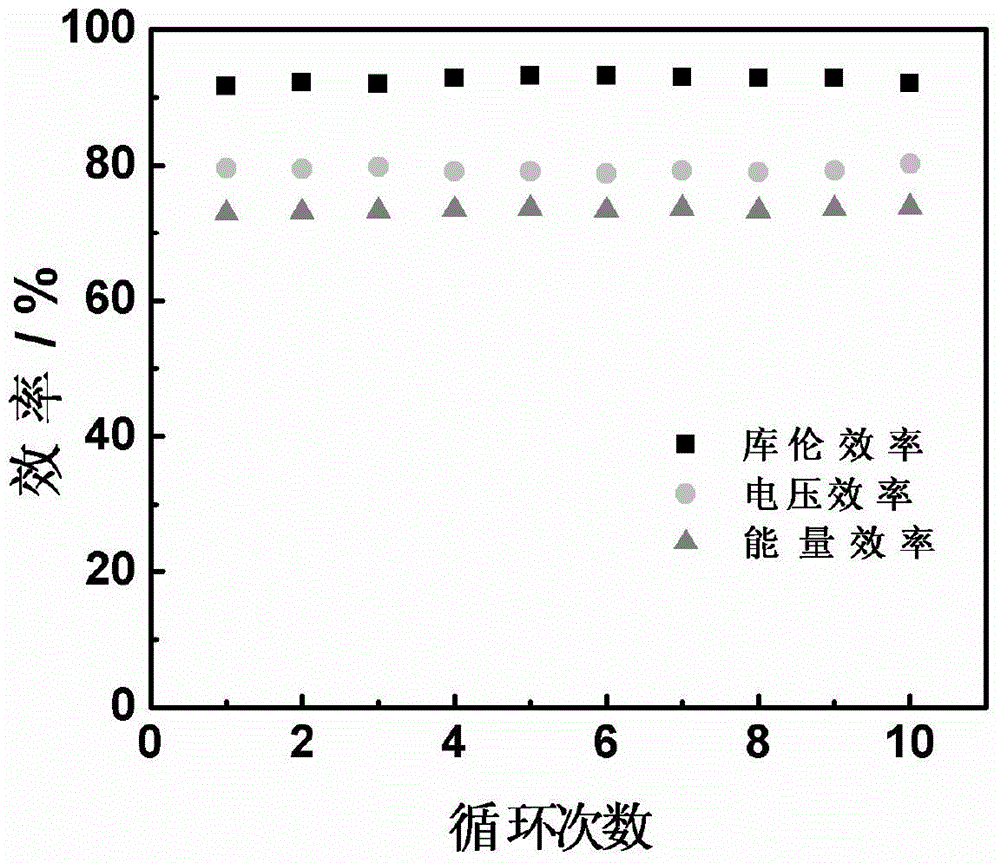Zinc-iodine flow battery
A flow battery and iodine solution technology, applied in the field of zinc-iodine flow batteries, can solve the problems of low battery energy density, limited application fields, storage, transportation and high material costs
- Summary
- Abstract
- Description
- Claims
- Application Information
AI Technical Summary
Problems solved by technology
Method used
Image
Examples
Embodiment
[0015] 1. Electrolyte configuration:
[0016] Positive electrode electrolyte: 40ml aqueous solution containing 0.1moldm -3 I 2 , 1 mold m -3 KI and 0.03moldm -3 LiI.
[0017] Negative electrode electrolyte: 40ml aqueous solution, which contains 1moldm -3 ZnSO 4 .
[0018] 2. Battery assembly:
[0019] Single cell positive terminal plate, positive pole (3x3cm 2 graphite felt), separator (Nafion115), negative electrode (3x3cm 2 graphite felt), negative terminal plate; single cell structure and system see figure 1 .
[0020] 3. Battery test:
[0021] The electrolyte flow rate is 5ml / min, and the charge and discharge current density is 10mA / cm 2 , The charging time is 1h, and the discharge cut-off voltage is 0.8V. See from battery performance figure 2 It can be seen that the average energy efficiency of the battery reaches about 73%.
PUM
 Login to View More
Login to View More Abstract
Description
Claims
Application Information
 Login to View More
Login to View More - R&D Engineer
- R&D Manager
- IP Professional
- Industry Leading Data Capabilities
- Powerful AI technology
- Patent DNA Extraction
Browse by: Latest US Patents, China's latest patents, Technical Efficacy Thesaurus, Application Domain, Technology Topic, Popular Technical Reports.
© 2024 PatSnap. All rights reserved.Legal|Privacy policy|Modern Slavery Act Transparency Statement|Sitemap|About US| Contact US: help@patsnap.com









